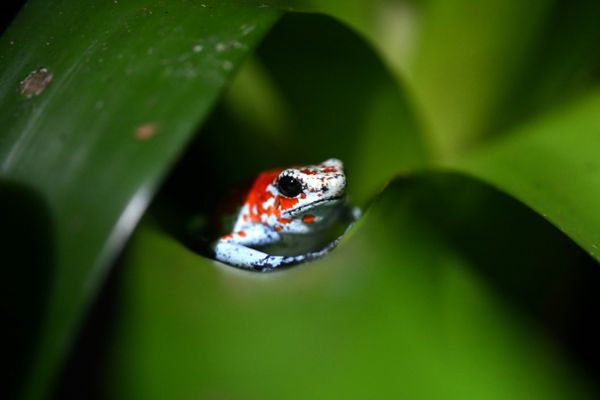
Every two years, leaders from around the world gather to discuss the state of life on Earth, negotiating agreements to preserve biodiversity and stop the destruction of nature. This week, representatives of 196 countries are gathering in Cali, Colombia, for the 16th UN Conference of the Parties summit (Cop16).
It is the first biodiversity-focused meeting since 2022, when governments struck a historic deal to halt the destruction of ecosystems. Scientists, Indigenous communities, business representatives and environment ministers from nearly 200 countries will discuss progress towards the targets and negotiate how they will be monitored. Here are the main things to look out for during the summit.
Is this decade’s big deal for nature agreement still alive?
Cop summits are defined by the big, multi-country agreements that they negotiate. For climate Cop meetings, that is the 2015 Paris agreement, which lays out what countries must do to keep global heating 1.5C (2.7F) below pre-industrial levels. For nature and biodiversity, it is the Kunming-Montreal agreement, hammered out in Canada two years ago, which laid out 23 targets and four goals to preserve nature this decade.
Now, the challenge is whether countries will put those agreements into action. Since its inception, the UN biodiversity process has been stuck in a cycle of underachievement. Despite urgent scientific warnings about the state of nature, countries have never met a target they set for themselves. This decade is meant to be different. In Colombia, governments are expected to present national strategies on how they plan to meet the targets known as National Biodiversity Strategies and Action Plans (NBSAPs).
Initial indications are that more than 80% of governments will arrive empty-handed, although some have good excuses: countries with enormous biodiversity such as Brazil say they are coming up with a complex, multi-decade strategy.
Nevertheless, the number of NBSAPS at the end of the summit will give a good idea of how seriously governments are taking the agreement.
Read more: Are countries following through on their promises to save nature?
Where is the money?
While commitments to protect and restore nature are the headlines of the agreement, money will be crucial to its success. During tense Cop15 negotiations in Montreal in 2022, developing countries said they needed more money to implement conservation targets and demanded a dramatic increase in finance as part of the final agreement.
Governments eventually agreed to provide at least $30bn (£23bn) a year of nature finance by the end of the decade, with an interim target of $20bn by 2025. With less than a year to go before the first milestone, new financial commitments from wealthy donor countries such as the UK and EU member states in Cali will signal whether governments are keeping their word.
Can countries agree on biopiracy?
The world’s coral reefs, rainforests and other rich ecosystems are bursting with information that could help future commercial discoveries. Nature’s genetic codes have become a new frontier of the AI industrial revolution, feeding hungry statistical models trying to create the next big thing in medicine, food and materials science.
But anger is growing in the global south about how profits are shared from these discoveries, with many countries warning they are not being paid their fair share. They liken the companies taking genetic information without acknowledging its source to “biopirates”.
At Cop16, countries will negotiate a world-first agreement on this issue. If they get it right, funds from the natural world’s genetic data could become a new and potentially lucrative revenue stream for conservation.
Read more: Who wins from nature’s genetic bounty? The billions at stake in a global ‘biopiracy’ battle
Will Indigenous groups play a role in decisions?
Indigenous peoples are mentioned 18 times in this decade’s targets to halt and reverse biodiversity, something that was celebrated as a historic victory. It followed decades of exclusion and bad treatment by the conservation sector. The importance of the Indigenous role in decision-making has become a common slogan in the nature sector in recent years – but many Indigenous communities are waiting to see what it means in practice. In some communities, there is significant scepticism about what some of this decade’s nature restoration targets could mean for land rights and customs.
Can Colombia leverage the meeting for peace with its rebels?
As host of Cop16, Colombia’s first leftwing government under its president, Gustavo Petro, has sought to use the international summit as a catalyst for domestic peace. Despite the Latin American country’s 2016 peace agreement with the Revolutionary Armed Forces of Colombia (Farc), conflict with guerrilla factions continues in parts of the country.
One group, Central General Staff (EMC), issued threats against the summit, in reaction to a major security deployment of 12,000 soldiers and police for this month’s meeting, but its leader later backed down. Cop16’s president, Susana Muhamad, Colombia’s environment minister, has said Cop16 is also an opportunity to draw a line under the violent conflict and was part of the motivation for the summit theme of “Peace with Nature”.
How do we measure progress?
While governments have already finalised their goals, they have not yet decided how success will be gauged. Measuring land protection and finance is relatively easy: official bodies at the UN and the Organisation for Economic Co-operation and Development oversee progress on these targets.
But measuring the decline of species, biodiversity density and sustainable resource management are much trickier and debates are continuing about how to track progress.
Find more age of extinction coverage here, and follow the biodiversity reporters Phoebe Weston and Patrick Greenfield on X for all the latest news and features










